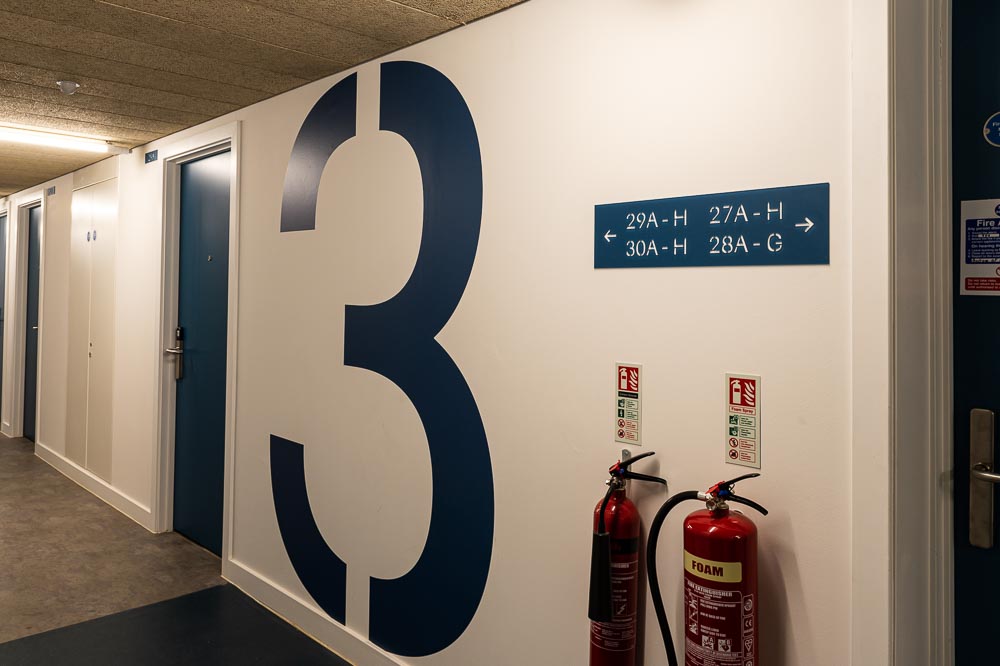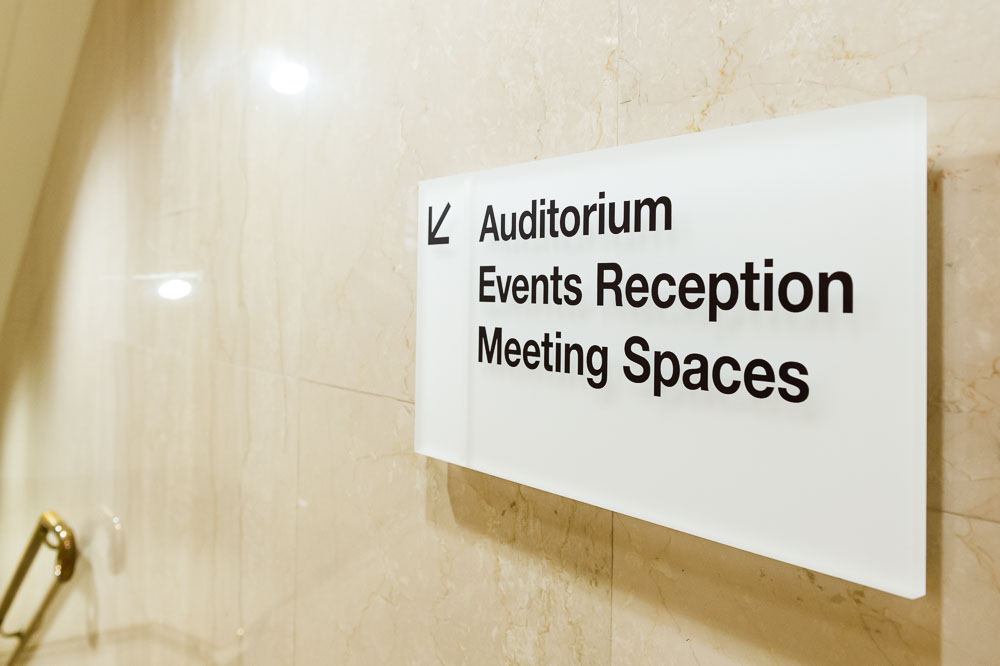Wayfinding in built environments is vital to get right as it both instructs and demonstrates directional information for general use and for safety. The main function of wayfinding is to convey information clearly and concisely without being confusing to visitors. Wayfinding directs visitors who may be unfamiliar with their surroundings to a location or destination effortlessly and takes account of the needs of all, including those with sight loss. A typical wayfinding signage scheme may consist of;
Identification Signs. These identify where the viewer is and do not provide directions, but instead, they may serve as a kind of “you are here” identifier or let users know when they’ve arrived at a specific point.
Directional Signs. These are signs to keep people moving from point A to point B, and typically appear at junctions or anywhere someone might have a choice of paths.
Informational Signs. These are less about moving toward a destination than about supplementing the journey with useful information that the user might need.
Regulatory Signs. Typically signs that inform users of regulations and requirements that are in place, and may include ‘no smoking’ and emergency situation signs.
A functional wayfinding scheme should follow design principles and standards to ensure that they are consistent in the message that they present and do not offer unreliable, confusing or conflicting information to the user. However, while there are national standards that control wayfinding signage in certain aspects and situations, signage on private sites such as businesses, educational institutions, and other non-public sites can vary in some respects.
The current British Standard for signage specifications BS599:2009 – Specification for the design and construction of signs for publicity, decorative and general purposes – controls most aspects of wayfinding and signs that would be found in a public area. The standard provides guidance on materials, design and construction, marking and literature, illumination requirements, protection against damage, and service life.
The critical components of effective wayfinding signage are the legibility of the text and any instructive or demonstrative images. These images tend to be icons that are understood internationally, but any lettering needs to be clear and easy to read at distance, to give provide understanding. There is not a single, standard font for lettering and different Government departments use a selection of different bespoke font sets. For example, the roadways use a series of fonts known as Transport in medium, heavy, and Greek for road signs, while the UK rail system uses its own Rail Alphabet for signage.
For Braille, Unified English Braille was introduced in 2015 as a means of providing a standard means of displaying Braille text, but there is still a lot of Standard English Braille that features in the UK. As the modern architecture design community continues to become more inclusively-aware, it is to be expected that wayfinding standards will continue to improve for users with sight loss.
There are no universal rules for typefaces used on wayfinding signs but the ultimate criteria is that it must be legible and not create confusion in its message. It should also be worth considering that non-standard font types may alienate visitors to the space, make wayfinding difficult and detract from the experience, or worse still put people off from revisiting a space again in the future.



